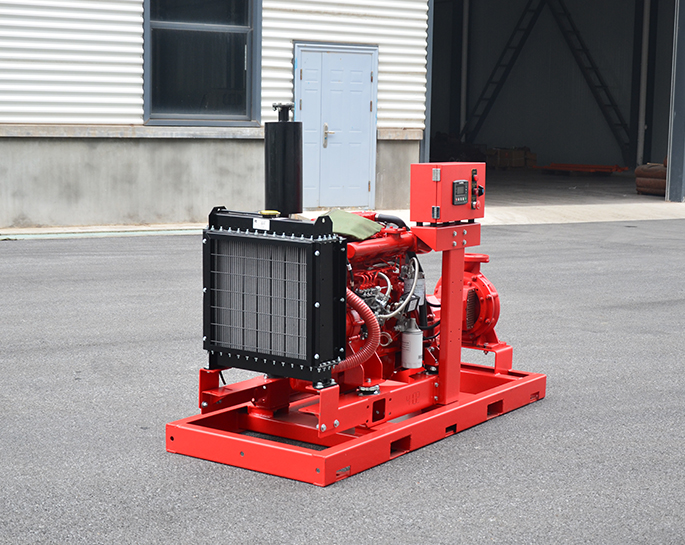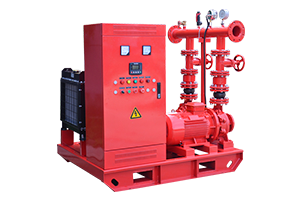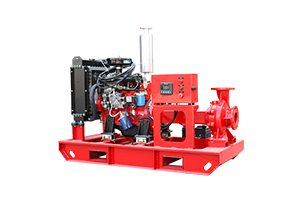What are the specific requirements for installing fire pumps in hazardous locations?
Aug 23, 2024
Share:
Installing fire pumps in hazardous locations requires adherence to specific safety and regulatory standards to ensure safe operation in environments where there is a risk of fire or explosion due to the presence of flammable gases, vapors, dust, or fibers. Here are the key requirements for installing fire pumps in hazardous locations:
### 1. **Classification of Hazardous Areas**
- **Identify Hazardous Areas**: Before installation, it's crucial to classify the area according to the level and type of hazard. This classification is usually based on national or international standards, such as the National Fire Protection Association (NFPA), International Electrotechnical Commission (IEC), or ATEX directives in Europe.
- **Class, Division, and Group**: In the U.S., hazardous areas are classified by class (indicating the type of hazardous material, e.g., gases or dust), division (indicating the level of risk, e.g., Division 1 for continuous exposure or Division 2 for intermittent exposure), and group (indicating the specific hazardous material, e.g., Group B for hydrogen).
- **Zones**: Outside the U.S., areas are typically classified into zones (Zone 0, Zone 1, Zone 2 for gases; Zone 20, Zone 21, Zone 22 for dusts) based on the likelihood of an explosive atmosphere being present.
### 2. **Explosion-Proof Equipment**
- **Explosion-Proof Motors**: Fire pumps installed in hazardous locations must use explosion-proof motors and electrical components designed to contain any explosion that could occur within the device and prevent it from igniting the surrounding atmosphere.
- **Certification**: All equipment must be certified for use in the specific hazardous location class, division, or zone. This includes pumps, motors, controllers, wiring, and any auxiliary equipment.
### 3. **Proper Enclosure Ratings**
- **Enclosures**: Electrical enclosures for fire pump controllers and other related equipment must have appropriate ratings (e.g., NEMA or IP ratings) that indicate they are suitable for use in hazardous locations. For instance, NEMA 7 or 9 enclosures are commonly used in hazardous environments to prevent the ingress of dust or gas.
### 4. **Sealing and Wiring Requirements**
- **Conduits and Seals**: All electrical wiring must be installed using explosion-proof conduits and fittings, with proper sealing to prevent the passage of gases or vapors into non-hazardous areas. Sealing fittings (e.g., explosion-proof seal-offs) should be installed within 18 inches of any enclosure in hazardous areas.
- **Cables**: Special cables rated for hazardous locations must be used to ensure safety and compliance.
### 5. **Ventilation and Gas Detection**
- **Adequate Ventilation**: Proper ventilation must be provided to prevent the accumulation of flammable gases or vapors. This can involve mechanical ventilation systems designed to dilute and remove hazardous gases from the area.
- **Gas Detection Systems**: In some cases, gas detection systems may be required to monitor the presence of flammable gases or vapors and provide an alarm or trigger safety systems in case of dangerous concentrations.
### 6. **Grounding and Bonding**
- **Electrical Grounding**: Proper grounding and bonding of all equipment and piping are essential to prevent static discharge, which could ignite a flammable atmosphere.
- **Anti-Static Measures**: Use anti-static materials and coatings where appropriate, particularly in dusty environments.
### 7. **Emergency Shutdown Systems**
- **Remote Shutdown Capabilities**: Fire pump systems should have emergency shutdown capabilities to isolate the pump and related systems in case of a fire or explosion. This can be achieved through remote shutdown switches located outside the hazardous area.
### 8. **Compliance with Fire Protection Standards**
- **NFPA 20**: In the U.S., NFPA 20 ("Standard for the Installation of Stationary Pumps for Fire Protection") provides detailed requirements for the installation of fire pumps, including in hazardous locations.
- **Other Regional Standards**: Compliance with regional fire protection standards is essential to ensure that the fire pump installation meets all legal and safety requirements.
### 9. **Routine Maintenance and Inspection**
- **Regular Inspections**: Equipment in hazardous locations requires regular inspection and maintenance to ensure it remains in safe operating condition. Inspections should include checking for proper operation of explosion-proof fittings, seals, grounding, and other safety features.
- **Documentation**: Maintaining detailed documentation of all equipment, inspections, and certifications is necessary for compliance and safety audits.
By adhering to these specific requirements, fire pumps can be safely installed and operated in hazardous locations, minimizing the risk of fire or explosion and ensuring reliable fire protection.

### 1. **Classification of Hazardous Areas**
- **Identify Hazardous Areas**: Before installation, it's crucial to classify the area according to the level and type of hazard. This classification is usually based on national or international standards, such as the National Fire Protection Association (NFPA), International Electrotechnical Commission (IEC), or ATEX directives in Europe.
- **Class, Division, and Group**: In the U.S., hazardous areas are classified by class (indicating the type of hazardous material, e.g., gases or dust), division (indicating the level of risk, e.g., Division 1 for continuous exposure or Division 2 for intermittent exposure), and group (indicating the specific hazardous material, e.g., Group B for hydrogen).
- **Zones**: Outside the U.S., areas are typically classified into zones (Zone 0, Zone 1, Zone 2 for gases; Zone 20, Zone 21, Zone 22 for dusts) based on the likelihood of an explosive atmosphere being present.
### 2. **Explosion-Proof Equipment**
- **Explosion-Proof Motors**: Fire pumps installed in hazardous locations must use explosion-proof motors and electrical components designed to contain any explosion that could occur within the device and prevent it from igniting the surrounding atmosphere.
- **Certification**: All equipment must be certified for use in the specific hazardous location class, division, or zone. This includes pumps, motors, controllers, wiring, and any auxiliary equipment.
### 3. **Proper Enclosure Ratings**
- **Enclosures**: Electrical enclosures for fire pump controllers and other related equipment must have appropriate ratings (e.g., NEMA or IP ratings) that indicate they are suitable for use in hazardous locations. For instance, NEMA 7 or 9 enclosures are commonly used in hazardous environments to prevent the ingress of dust or gas.
### 4. **Sealing and Wiring Requirements**
- **Conduits and Seals**: All electrical wiring must be installed using explosion-proof conduits and fittings, with proper sealing to prevent the passage of gases or vapors into non-hazardous areas. Sealing fittings (e.g., explosion-proof seal-offs) should be installed within 18 inches of any enclosure in hazardous areas.
- **Cables**: Special cables rated for hazardous locations must be used to ensure safety and compliance.
### 5. **Ventilation and Gas Detection**
- **Adequate Ventilation**: Proper ventilation must be provided to prevent the accumulation of flammable gases or vapors. This can involve mechanical ventilation systems designed to dilute and remove hazardous gases from the area.
- **Gas Detection Systems**: In some cases, gas detection systems may be required to monitor the presence of flammable gases or vapors and provide an alarm or trigger safety systems in case of dangerous concentrations.
### 6. **Grounding and Bonding**
- **Electrical Grounding**: Proper grounding and bonding of all equipment and piping are essential to prevent static discharge, which could ignite a flammable atmosphere.
- **Anti-Static Measures**: Use anti-static materials and coatings where appropriate, particularly in dusty environments.
### 7. **Emergency Shutdown Systems**
- **Remote Shutdown Capabilities**: Fire pump systems should have emergency shutdown capabilities to isolate the pump and related systems in case of a fire or explosion. This can be achieved through remote shutdown switches located outside the hazardous area.
### 8. **Compliance with Fire Protection Standards**
- **NFPA 20**: In the U.S., NFPA 20 ("Standard for the Installation of Stationary Pumps for Fire Protection") provides detailed requirements for the installation of fire pumps, including in hazardous locations.
- **Other Regional Standards**: Compliance with regional fire protection standards is essential to ensure that the fire pump installation meets all legal and safety requirements.
### 9. **Routine Maintenance and Inspection**
- **Regular Inspections**: Equipment in hazardous locations requires regular inspection and maintenance to ensure it remains in safe operating condition. Inspections should include checking for proper operation of explosion-proof fittings, seals, grounding, and other safety features.
- **Documentation**: Maintaining detailed documentation of all equipment, inspections, and certifications is necessary for compliance and safety audits.
By adhering to these specific requirements, fire pumps can be safely installed and operated in hazardous locations, minimizing the risk of fire or explosion and ensuring reliable fire protection.







